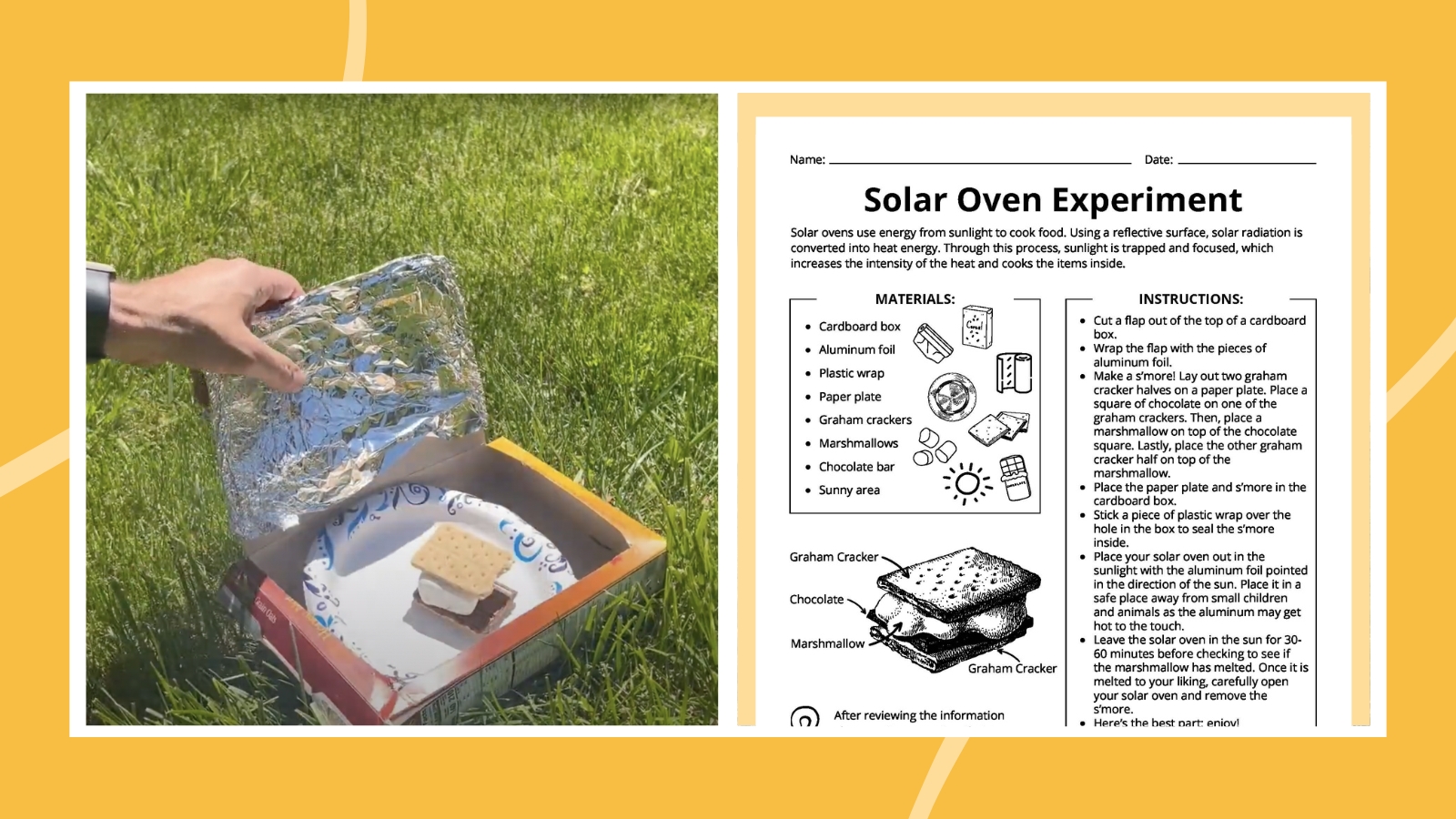This fun experiment is a perfect exploration to do with the summer months approaching. We’re taking a classic summertime snack, usually made on a campfire, and showing you how to make it in an easy way—no campfire required! I’m talking about making ooey, gooey, tasty s’mores! Read on to see how you can make these with kids in a fun, safe way by conducting a Solar Oven Science Project.
Also grab your free printable Solar Oven Experiment recording sheet when you fill out the form on this page.
How does a solar oven work?
A solar oven, also known as a solar cooker, utilizes the energy from sunlight to cook food. It works on the principle of converting solar radiation into heat energy. So how does it operate? Solar ovens are typically designed with reflective surfaces, such as mirrors or aluminum foil, which help to concentrate sunlight onto a central cooking area. These surfaces trap and focus sunlight, increasing the intensity of heat and cooking the items inside.
Check out this video of how Solar Oven Science actually works!
Materials Needed:
- Cardboard box
- Aluminum foil
- Plastic wrap
- Paper plate
- Graham crackers
- Marshmallows
- Chocolate bar
- Sunny area
How do you do the solar oven science project?
Cut a flap out of the top of a cardboard box.
I used a cereal box to get the size I wanted.
Wrap the flap with the pieces of aluminum foil to create a reflective surface.
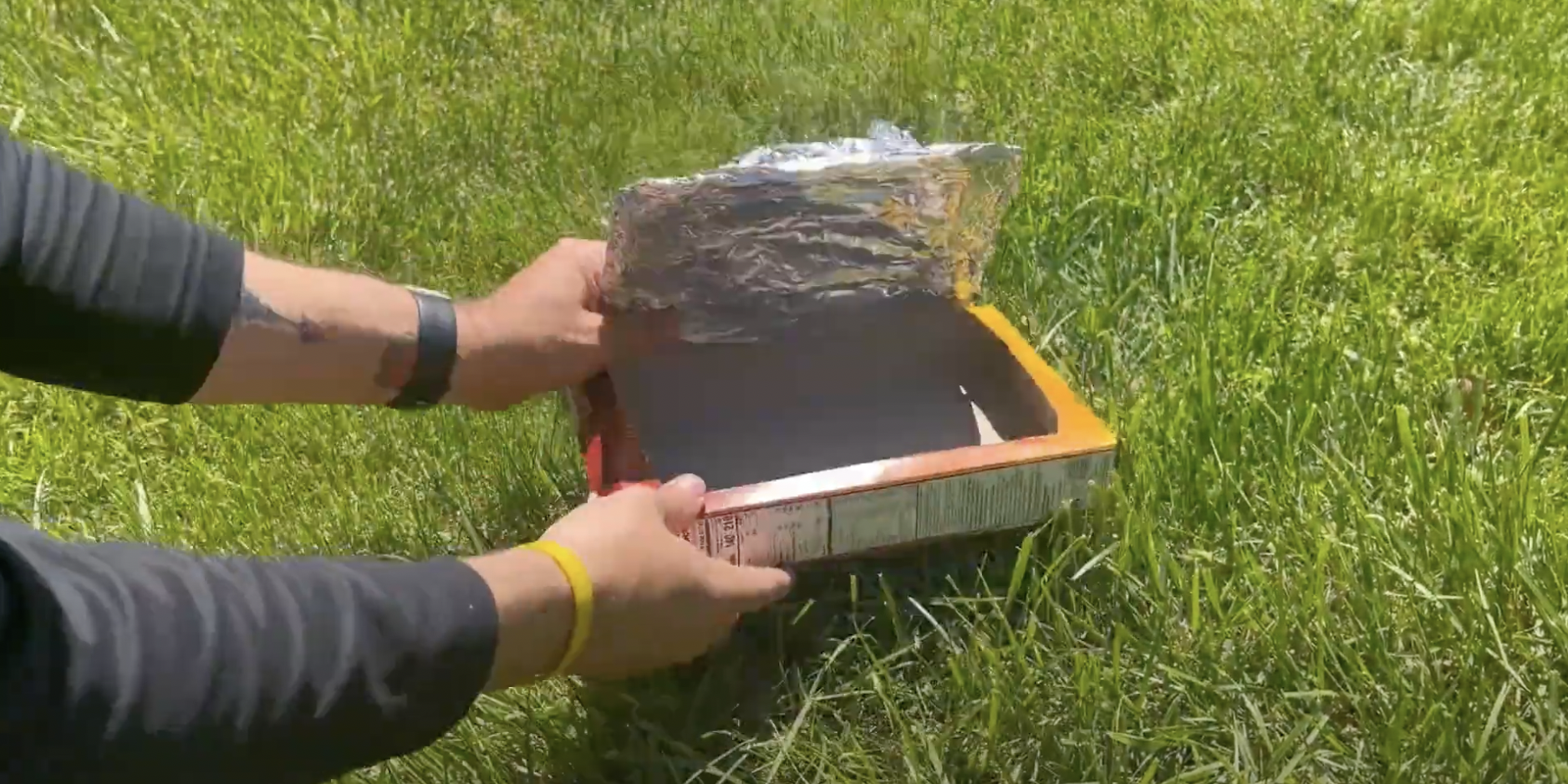
Make a s’more!
Lay out two graham cracker halves on a paper plate. Place a square of chocolate on one of the graham crackers. Then, place a marshmallow on top of the chocolate square. Lastly, place the other graham cracker half on top of the marshmallow.
Place the paper plate and s’more in the cardboard box.
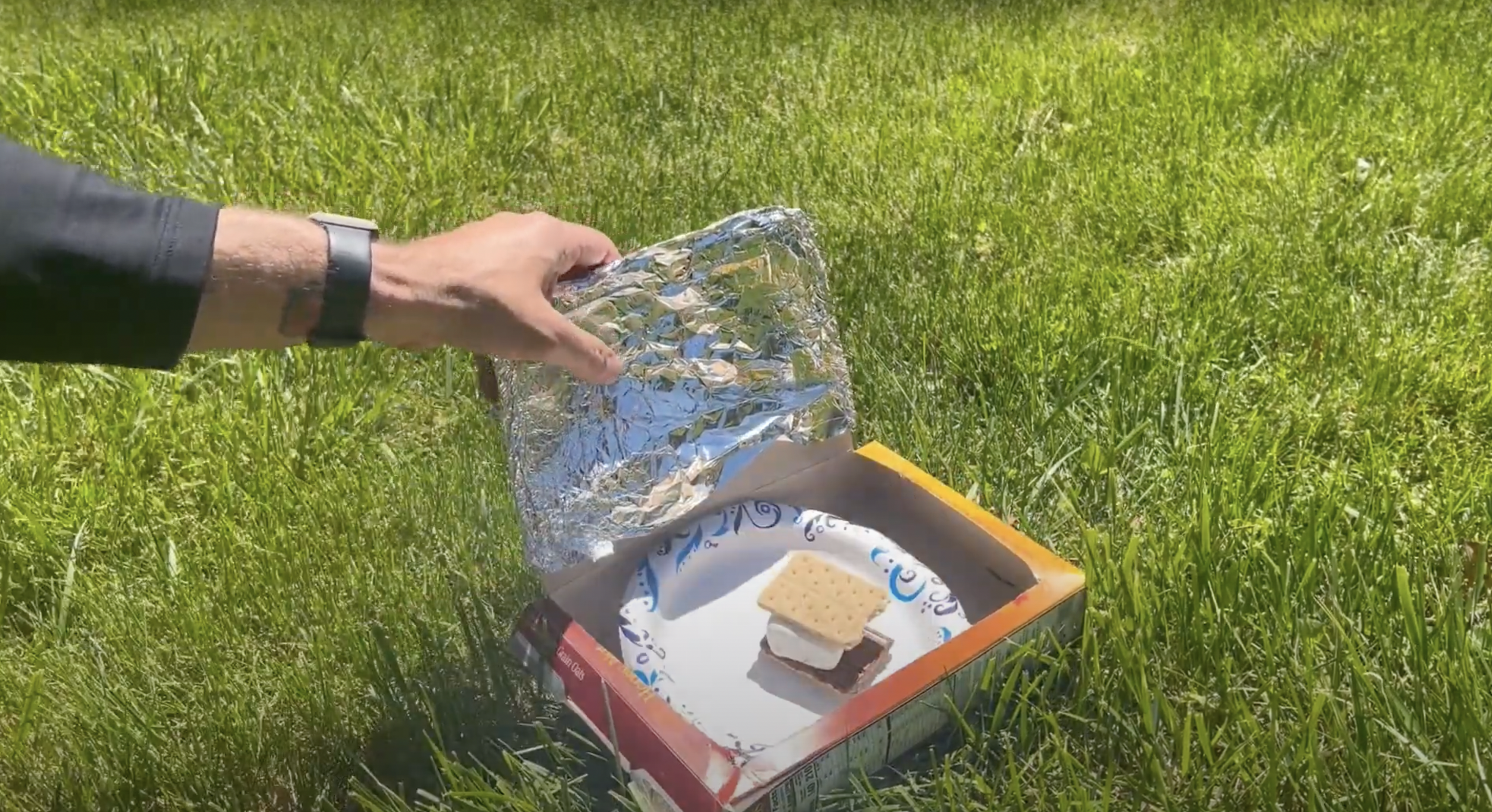
Stick a piece of plastic wrap over the hole in the box to seal the s’more inside.
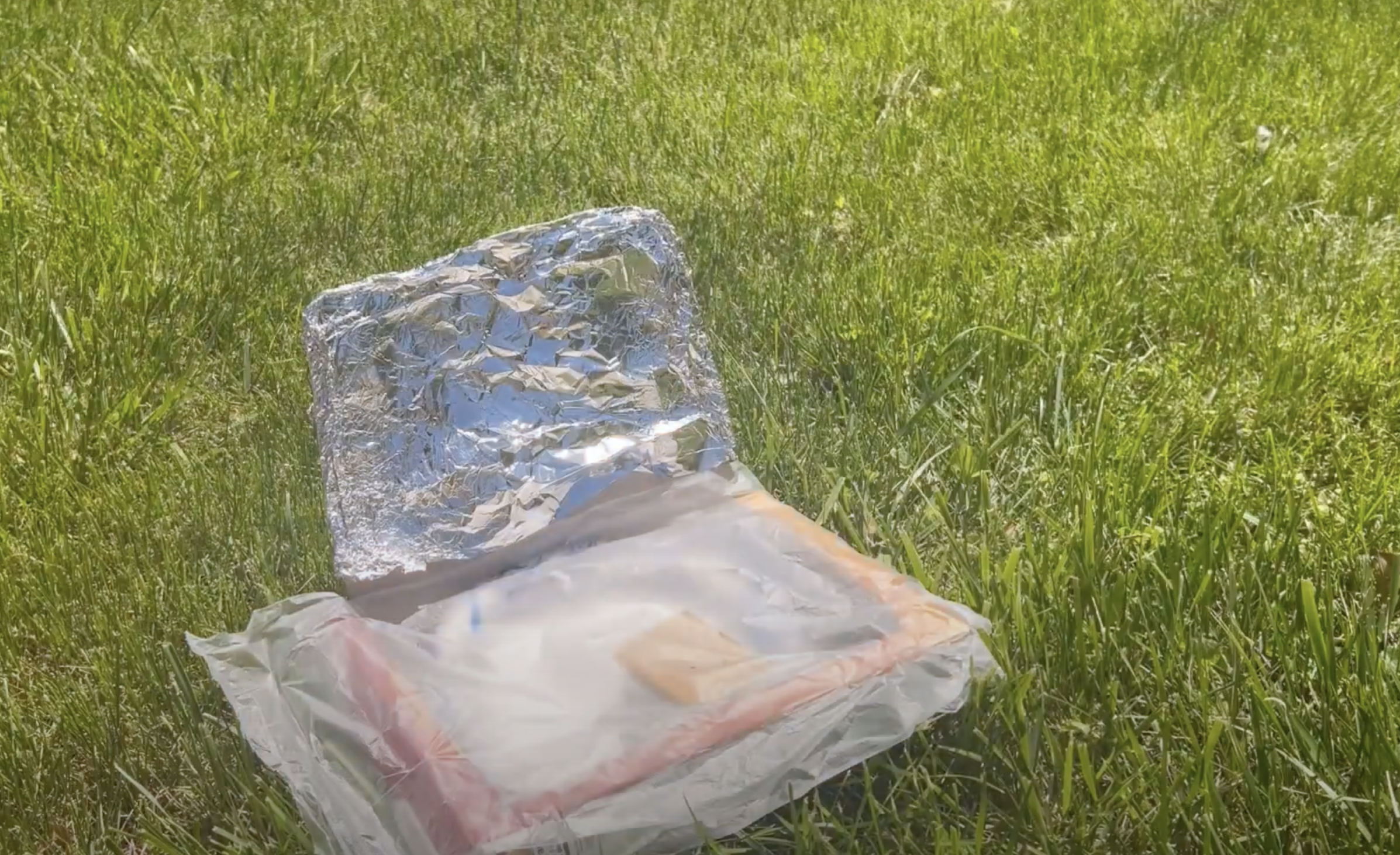
Now you’ve made a proper stove!
Place your solar oven out in the sunlight with the aluminum foil pointed in the direction of the sun.

Place it in a safe place away from small children and animals as the aluminum may get hot to the touch.
Leave the solar oven in the sun for 30-60 minutes before checking to see if the marshmallow has melted.
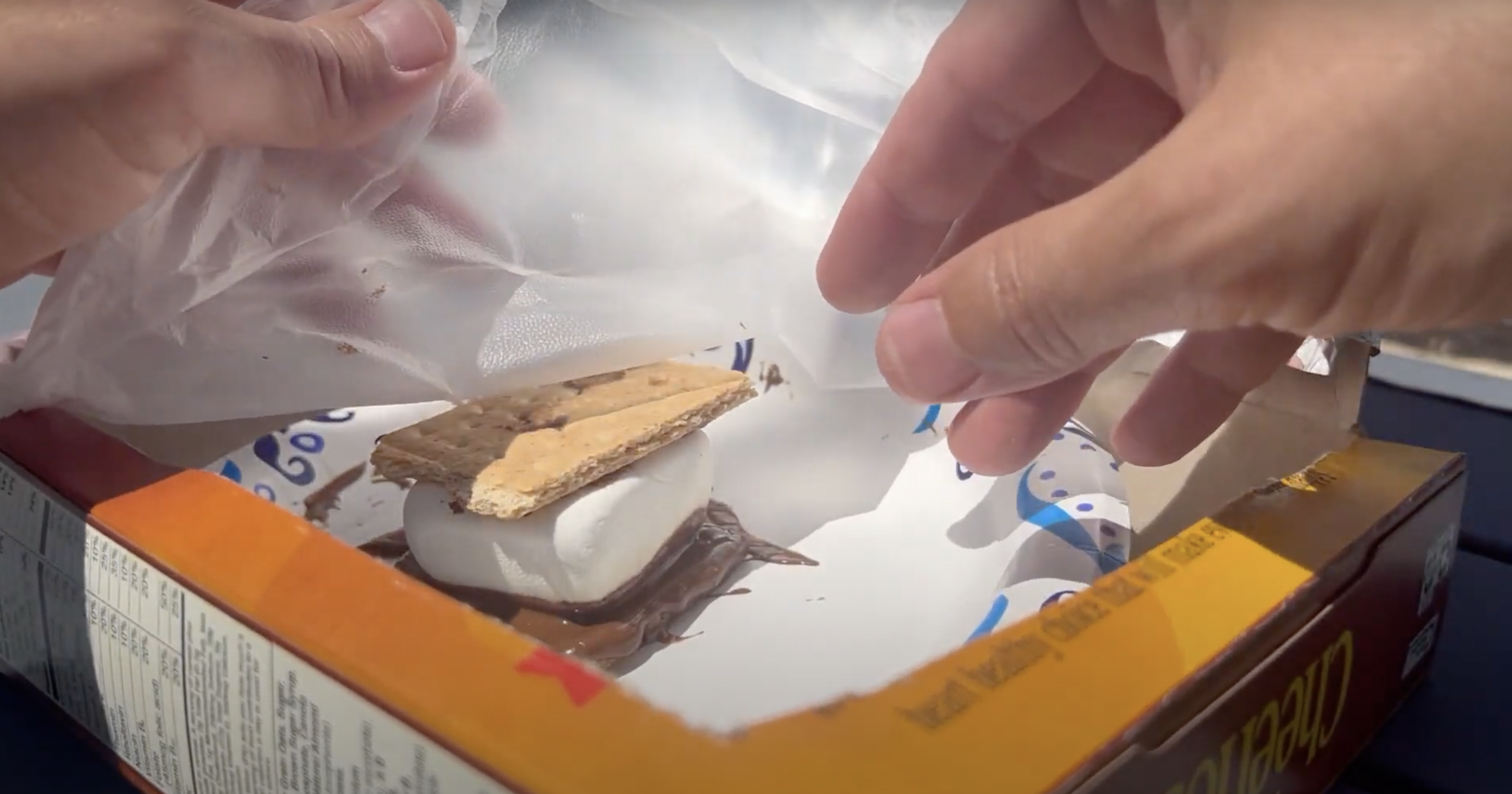
Once it is melted to your liking, carefully open your solar oven and remove the s’more.
Here’s the best part …
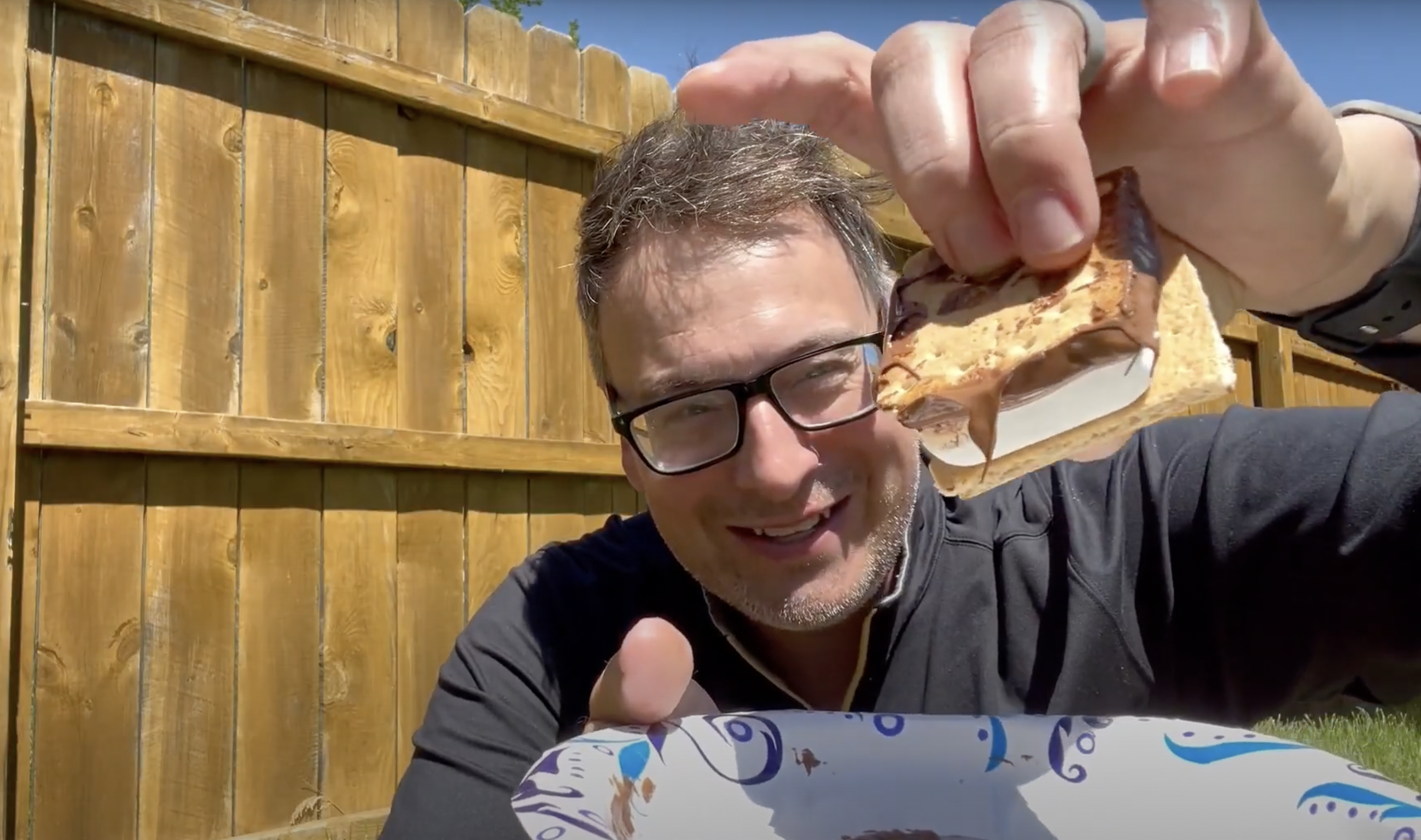
Enjoy eating your s’more!
What does the Solar Oven Experiment teach?
By harnessing the power of sunlight, solar ovens offer a sustainable and environmentally friendly alternative to conventional cooking methods, particularly in regions with ample sunlight. Try this with your students, or make a tasty treat for yourself, and enjoy a snack knowing you used an environmentally friendly method to cook it!
Get your free Solar Oven Experiment recording sheet:
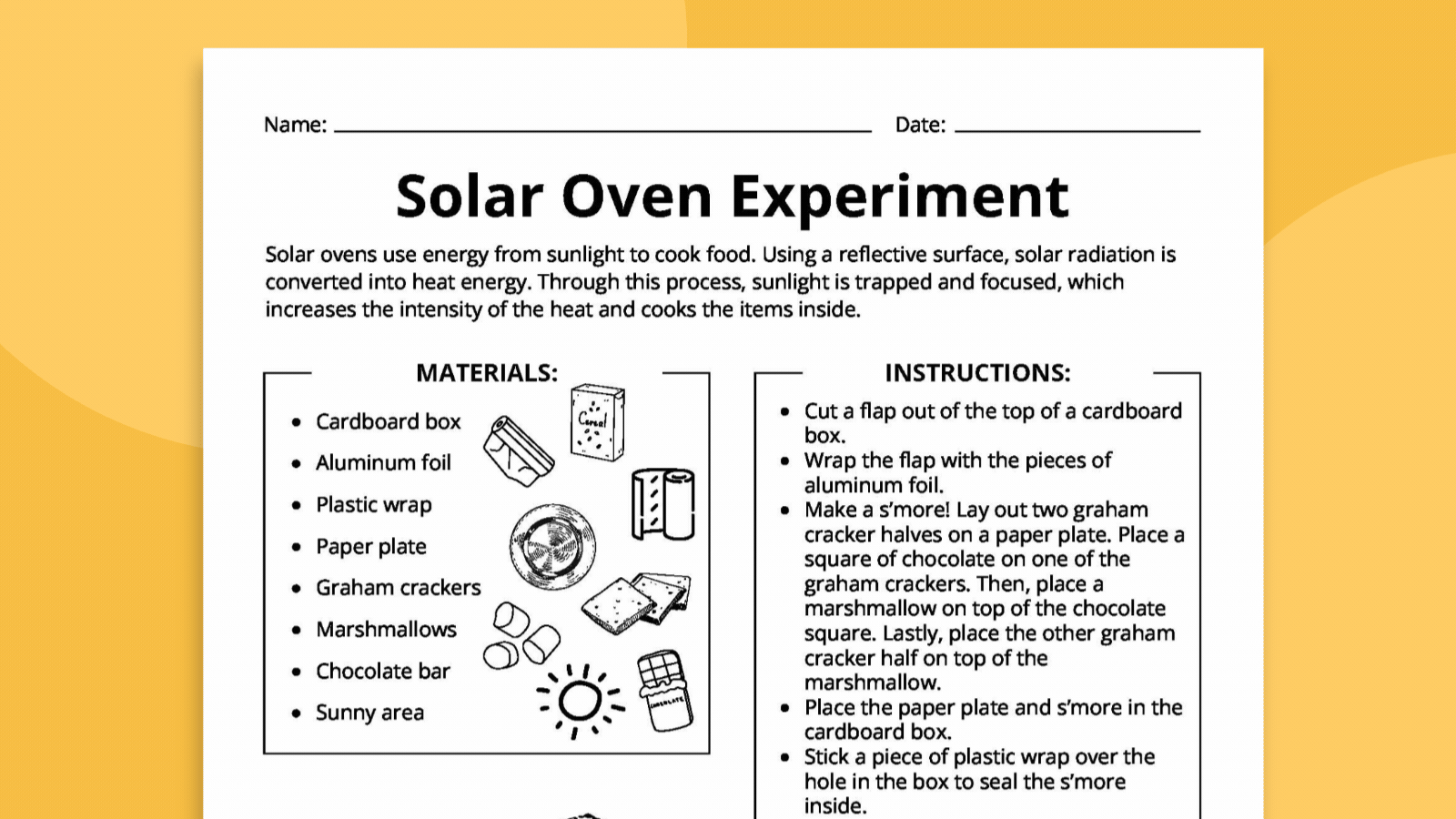
Just fill out the form on this page to get instant access to your free printable Solar Oven Experiment recording sheet.
